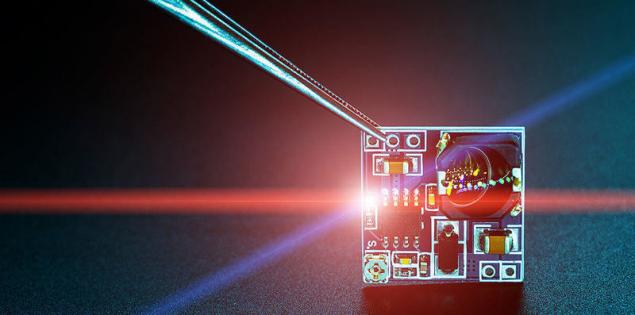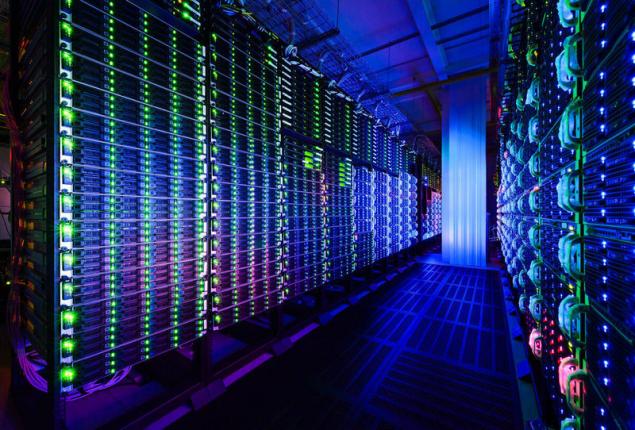Wireless data center on the microchip saves energy
 Bashny.Net
Bashny.Net
The research group of the University of Washington have developed a tiny wireless data center with substantially reduced energy consumption. The device on the microchip was presented at the Embedded Systems conference Week in Pittsburgh. Data centers and high performance computers require a huge amount of energy and space, and, most of all — the cooling system of air. Only in the United States in 2013 data centres consumed 91 billion kWh, the equivalent power of 34 large coal-fired power plants.

Big corporations — Facebook or Google — it is possible to improve the energy efficiency, but many small companies still consume a lot of resources. Industry leaders and the public are showing increasing interest in economical and renewable technologies of computing.
"We have reached the limit of our energy opportunities, says Professor Partha Pande Pratim submitting the microchip at the conference. — In order to meet the challenge of energy efficiency, architecture and technology must adapt to the needs of the community." Unlike portable devices become wireless, data centers often use standard metal wire. Since most of them consists of several data centers, between them there is an exchange of information through a wire that slows down the process and wasting energy.
A few years ago, Professor Panda has invented a wireless network on a microchip, which works similar to cell phone reception.

The new invention extends the previous one. In particular, scientists have moved from two-dimensional to three-dimensional chip, which is able to work faster and more efficiently. For example, large data processing is 3 times more productive than the best of the existing servers of the data centers.
The microchip of this architecture can replace the performance of conventional data centers, and requires less space and energy. However, this will require effort on integration, said Professor Panda.
Problems of energy saving are concerned and Microsoft researchers, who build centers of storing and processing information under water. Capsules installed at a depth of 10 meters and operate completely autonomously, without requiring human intervention for over 20 years. In addition, the capsules can consume renewable energy. published
Source: hightech.fm/2016/10/06/data-chip

Big corporations — Facebook or Google — it is possible to improve the energy efficiency, but many small companies still consume a lot of resources. Industry leaders and the public are showing increasing interest in economical and renewable technologies of computing.
"We have reached the limit of our energy opportunities, says Professor Partha Pande Pratim submitting the microchip at the conference. — In order to meet the challenge of energy efficiency, architecture and technology must adapt to the needs of the community." Unlike portable devices become wireless, data centers often use standard metal wire. Since most of them consists of several data centers, between them there is an exchange of information through a wire that slows down the process and wasting energy.
A few years ago, Professor Panda has invented a wireless network on a microchip, which works similar to cell phone reception.

The new invention extends the previous one. In particular, scientists have moved from two-dimensional to three-dimensional chip, which is able to work faster and more efficiently. For example, large data processing is 3 times more productive than the best of the existing servers of the data centers.
The microchip of this architecture can replace the performance of conventional data centers, and requires less space and energy. However, this will require effort on integration, said Professor Panda.
Problems of energy saving are concerned and Microsoft researchers, who build centers of storing and processing information under water. Capsules installed at a depth of 10 meters and operate completely autonomously, without requiring human intervention for over 20 years. In addition, the capsules can consume renewable energy. published
Source: hightech.fm/2016/10/06/data-chip
Tags
See also
Google Glass: release date, specifications, price and partnership with Ray-Ban and Oakley
The one and only cause of Your constant fatigue
Electricity from the marshes
Laser Technology 3D-printing of several metals with a smooth transition between them
Recommendations on how to improve sleep quality. Take into service!
Robot octopus floats in the open sea
Solar panels from perovskite: quantum dots and exceptional efficiency
Switch fat: the Perfect "weight" does not always depend on kilograms
Led light bulb create a wireless connection
Presented two new wireless chargers for smartphones
















